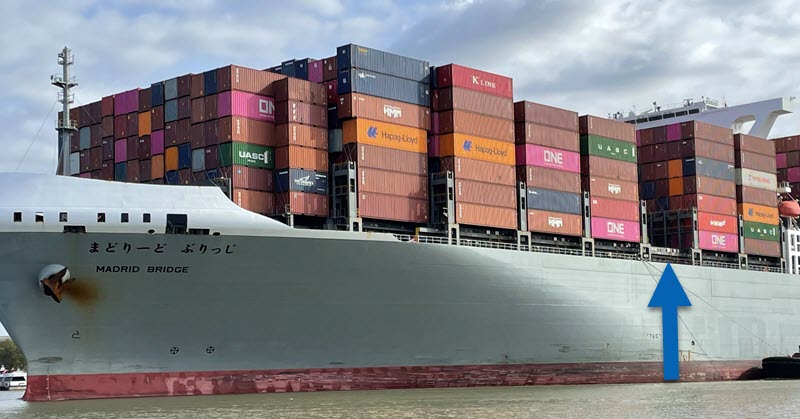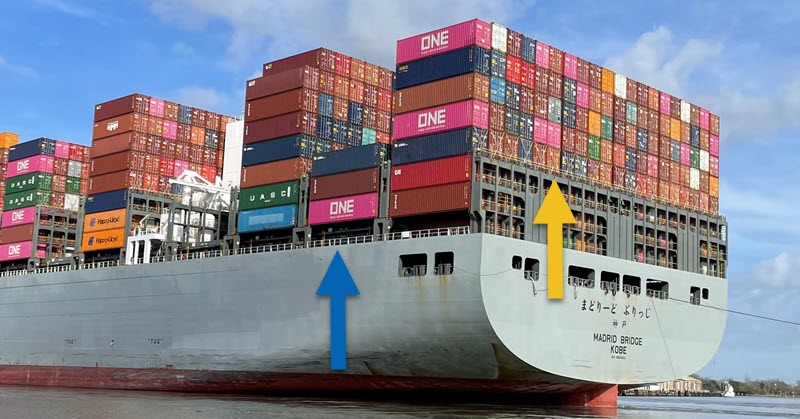As a bookkeeper or accountant, understanding current events provides you with information to support your clients. Even if you have read many of the headlines discussing supply chain disruptions over the past year, there continues to be news that isn't widely disseminated or that is rapidly evolving. Read on to learn more.
Supply Chain Management
Supporting your clients through supply chain management allows you to become even more indispensable to them. You don't need to be a supply chain management expert or an operational advisor to provide valuable support with common sense questions. This article, written last spring, is equally valuable today as it provides information about supply chain management during disruptions, including questions you can ask your clients.
Current Events and Shipping Practices Affecting the Supply Chain
There are multiple threats to the supply chain as of this writing. Some of these threats are continuations of the global shipping crisis often discussed during the pandemic, ranging from manpower shortages to lack of warehouse space and trucking as customers spent more of their income on goods. These issues led to the widely reported "bottlenecks" at US ports which have not been frequently reported lately. However, they still exist. Currently, the Ports of Los Angeles and Long Beach are seeing approximately 60 ships waiting at anchor while those ships are taking from 20 days to 2 months to discharge cargo.
In addition to delays we've been reading about for what seems like years, there are other concerns about the supply chain. One of these is at the forefront of news and one isn't commonly discussed.
Russian Invasion of Ukraine
Although Russia and Ukraine may only produce a small portion of the imports for major manufacturing nations, they are essential suppliers of raw materials and energy for many critical supply chains. Restrictions and outright bans on materials and goods exported from Russia and manufacturing and shipping disruptions in war-torn Ukraine have already and will continue to cause major supply chain issues.
Together, Russian and Ukraine historically export more than 25% of wheat globally and Ukraine by itself exports more than half of the world's sunflower oil. These and other products could see accelerating inflation. In addition, Russia and Ukraine together lead the world in the production of metals and minerals such as nickel, copper, iron, titanium, neon, palladium, and platinum. These metals and minerals are used in countless industries and products, but one product type is particularly concerning - microchips. Neon is used in the production of microchips; 90% of neon originates in Russia and 60% of that neon is purified in Odessa, Ukraine.
Although restrictions and bans on Russian materials and goods and disruption of exports from Ukraine affect all methods of export, the effect on shipping is significant because of the sheer volume carried in today's massive cargo and container ships.
News outlets have reported on the Russian rocket attack on the Bangladeshi cargo ship Banglar Samriddhi that killed one crew member and the Estonian MV Helt that was sunk following an explosion below the waterline. And there have been at least three other merchant ships that have been blown up in the region. What you may not be hearing about is the number of ships and crews that are currently stranded in the area. Around 140 ships are stranded, unable to leave after restrictions in portions of the Black Sea due to the threat of underwater mines. There are around a dozen oil-product tankers, a sunflower oil carrier, 45 bulk ships used to transport grains, ore and coal, and 55 other cargo and container vessels.
As the Russian invasion continues, repercussions, ranging from the horrible humanitarian cost to rising inflation will be felt across the world. And regardless of the outcome of the Russian invasion, those effects will threaten numerous industries - and ultimately your small business clients.
Shipping Industry Practices
How many of your clients receive materials or goods shipped in from outside of the U.S.? If they do, you have probably heard many complaints about the current state of shipping. Because of the impact on small businesses, I've been following the state of shipping for the last year.
You probably heard about the Felicity Ace that caught on fire and ultimately sank - and the loss of all of the Volkswagens, Porsches and Lamborghinis. But that isn't the most interesting shipping accident for me.
I recently visited Savannah Georgia and was fortunate to stay right on the Savannah River. I quickly became obsessed with tracking the massive cargo ships as they went into or out of the port. In fact, I quickly found a website that allowed me to see the ships entering/departing through GPS tracking and compare that to what I was seeing out the window. Once I found that website, I could then plan to head to the riverside to watch the cargo ships come in right in front of me.
One day I saw that the Madrid Bridge was entering the Savannah River to come to port. Out of curiosity, I googled the cargo ship to see if I could find out what goods it was carrying. I couldn't find that anywhere, but I did find this headline, "ONE-Operated MV Madrid Bridge Loses Containers in Atlantic Ocean." I definitely went to watch this ship come into port - and I took pictures!
The Madrid Bridge lost 65 shipping containers overboard and another 89 shipping containers were damaged during a container collapse caused by a large swell and high winds while the ship was anchored near the Azores.
An interesting note is that the row of shipping containers in the forward bay (near the front) all fell off to the left side of the ship (port) and the row of containers near the rear (aft) all fell to the right side (starboard). You can view photos of the Madrid Bridge anchored near Charleston prior to offloading the damaged containers that clearly show the results of this phenomenon.

This is the photo of the Madrid Bridge that I took as the ship entered Savannah's port. The blue arrow shows the empty sixth bay where the damaged shipping containers were removed in Charleston prior to arrival in Savannah.
So, why did I tell you about the Madrid Bridge? It is a perfect example of a common shipping industry practice that results in the loss of thousands of containers into the seas every year. In fact, in 2020 more than 3,000 containers were lost and in 2013, an entire shipload of containers - 4,293 - were lost when a ship broke in two and sank.
Although some blame the spike in lost containers due to more unpredictable weather, larger ships and increased consumer demand during the pandemic, the true cause may be more unsettling.
Shipping expert, Sal Mercogliano, explained in his Youtube video "Why do Containers Fall off containerships?" The explanation below comes from this video, but the video is well worth the 22-minute watch.
Containers stacked on ships are inherently unstable.
If you picture a single stack of Lego blocks stacked one on top of the other, you can imagine the instability that develops the taller the stack becomes. The same thing happens in container ships.
The container stacks you see above the side of the Madrid Bridge in the picture above - 7 high - are in addition to the containers that you can't see below the deck. As containers are initially loaded, they are loaded into cell guides into the hold of the ship and up to the first row above the deck. These cell guides and the sides of the hull add some rigidity to the stacks.
To add additional stability as each stack grows in height, twist-lock mechanisms are engaged to connect each container in the tall stack to the one above and the one below. But, unlike Lego blocks that fit together tightly along their length and can also be staggered to increase the strength of the connection, shipping containers are stacked directly one above the other and are only "locked" at the feet at each of the corners.
Ideally, as the containers are loaded into the ship, the heavy containers are loaded in the hull and only light container are added to the top. This practice reduces swaying at the top of the stack; unfortunately, it does NOT always happen.
The final measure used to more stability is the use of cross lashings applied to each end of the containers. In the picture below, you will see the yellow arrow pointing to the crossed lashes.

What you may also see in the picture above is that cross-lashings are NOT used in the top four layers of containers. And this is the ultimate issue.
Across the industry, shipping companies have chosen to leave cross-lashings OFF ships in the top layers - simply because of money and time. It is more financially viable for them to write off those containers than to spend the cash on labor to add the lashings and take the extra time to add them (as well as remove them). As a result, containers and goods wash up on shores around the world and lay at the bottom of the ocean. The industry's risk analysis has chosen money and time over impact on their customers and the environment.
One final note. Remember where I noted above that the containers in the forward bay fell off the ship to the left and the ones in the aft bay fell off to the right? That is because ships have become so big that the front and the back of the ship actually lean to opposite directions as it rides over the waves!
.png?width=150&height=63&name=TWRlogo-regmark_blueblack%20(1).png)
.png)









Do you have questions about this article? Email us and let us know > info@woodard.com
Comments: